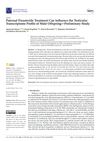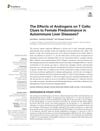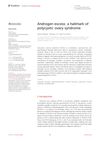TLDR Finasteride may cause lasting sexual issues by altering specific genes in human cells.
The study investigated the epigenetic effects of finasteride on human Leydig cells to understand the biochemical mechanisms behind Post-finasteride Syndrome (PFS), which includes persistent sexual dysfunction and infertility. Human Leydig cells were cultured with 0.5 μM finasteride for 14 days, and whole-genome DNA methylation analysis was performed. The results identified specific genes and pathways that could be responsible for PFS, potentially leading to treatments to reverse the condition. The research was supported by NIH/NIA funding.
 21 citations
,
January 2020 in “General and Comparative Endocrinology”
21 citations
,
January 2020 in “General and Comparative Endocrinology” Lack or blocking of SRD5a, a key component in hormone creation, can lead to conditions like pseudohermaphrodism and affect hair growth, bone mass, muscle strength, and reproductive health. More research is needed on its regulation from fertilization to adulthood.
4 citations
,
June 2023 in “Frontiers in Aging” Improving blood flow and oxygen levels in middle age may help prevent age-related diseases.
 1 citations
,
July 2021 in “Current Issues in Molecular Biology”
1 citations
,
July 2021 in “Current Issues in Molecular Biology” Father's finasteride use may affect son's fertility and testicular function.
 34 citations
,
July 2020 in “Frontiers in immunology”
34 citations
,
July 2020 in “Frontiers in immunology” Androgens may influence T cells, contributing to higher autoimmune liver disease risk in women.
 December 2023 in “Frontiers in endocrinology”
December 2023 in “Frontiers in endocrinology” Excess androgens may cause PCOS, not just be a symptom.




